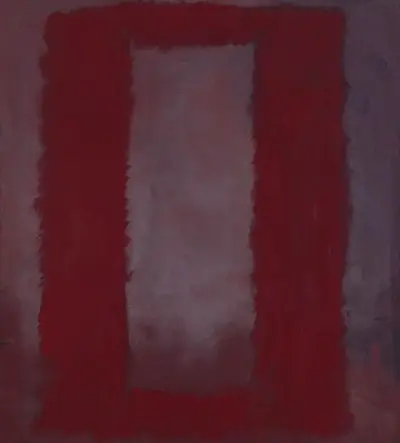Here we find a dominant red square outline which covers most of the dimensions of the mural. The background is much lighter and shows through the centre of the square shape, because it is open. It feels almost like an abstract depiction of a window or portal, and that is how many academics have described it. We believe that the idea behind using this shape may have come from elements of the architecture of the building in which it was intended to be hung. A restaurant within the Seagram Building in New York had several walls free and had been set aside in order to accept various works produced by Rothko, all of which would follow a particular theme. He went for this window approach, though eventually the project was cancelled and the murals completed were dispersed elsewhere.
The artist played an important role within the New York School, although he always liked to be seen as a unique artist, free of any specific labels. He would help to establish American art as the most important across the globe for a number of decades, which was quite a change compared to previous centuries when its artists had very much followed in the footsteps of their European colleagues. The course of art history has delivered similar changes over time, when once Italy dominated, before the Northern European artists would take things in a new direction, for example.
Rothko would become uncomfortable with the idea of his work being displayed within a restaurant and so closed out the project before anything changed hands. He decided to donate some of these pieces to art galleries around the world, in order to help others enjoy his achievements and also to create a positive outcome from this unsuccessful project. They would be shared between art galleries and museums within the US, UK and Japan and most remain with the same institutions today, displayed prominently to reflect the importance of this artist's career. Rothko would do this from time to time as he wanted to protect his legacy and avoid all of his career's achievements being lost within private collections that would often be entirely inaccessible to the public. That would also damage his own reputation, as fewer people would come across his work.

